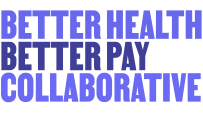Enhancing Medicaid Access While Integrating Employment Support
Implementing work requirements in Medicaid presents challenges, but it also offers opportunities to improve enrollment processes and enhance access to care. By prioritizing user experience and leveraging technology, states can create systems that support individuals in maintaining coverage while working toward financial independence.
Strategies for Improvement:
- Seamless Integration with Employment Services – Connecting Medicaid enrollment with workforce development programs ensures enrollees gain access to both job opportunities and healthcare in a streamlined process.
- User-Friendly Digital Portals – Simplifying online reporting systems allows individuals to update work status, check eligibility, and renew coverage efficiently, reducing administrative barriers.
- Proactive Outreach & Personalized Support – Community-based navigators, AI-powered assistance, and case management services can help enrollees navigate challenges such as job training, childcare, and transportation.
- Flexible Reporting & Compliance Options – Offering multiple ways to report work compliance—via mobile apps, call centers, or in-person assistance—ensures accessibility while recognizing diverse circumstances like caregiving or health issues.
- Strong Community Partnerships – Collaborating with workforce agencies, employers, and nonprofits expands access to job opportunities tailored to enrollees' skills and needs.
- Data-Driven Insights & Continuous Improvement – Leveraging analytics to identify coverage gaps and collecting enrollee feedback ensures programs remain effective and supportive.
With a thoughtful approach, work requirements can serve as a tool to promote both employment and health coverage, rather than becoming a barrier to essential benefits. Prioritizing accessibility, efficiency, and individualized support can lead to better outcomes for enrollees and communities alike.




